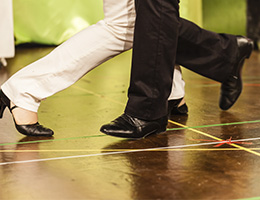
If there's a problem with blood flow to your legs, your legs may let you know.
Leg pain or discomfort while walking, known as intermittent claudication, is often the first noticeable sign of peripheral artery disease (PAD), according to the American Heart Association (AHA). PAD occurs when arteries to the legs become narrowed or blocked by fatty plaque as a result of atherosclerosis.
How it feels. If you have intermittent claudication, you may feel aching, numbness or heaviness in your legs and cramping in your legs, hips, thighs, calves or buttocks.
When it happens. Intermittent claudication typically occurs during exercise such as walking or climbing stairs—activities that use the leg muscles. The discomfort usually goes away when you rest for a few minutes and starts again if you resume the activity.
Why it happens. Except in the most severe cases, people with PAD usually only have claudication symptoms during exercise. That's because muscles need more oxygen-rich blood when they're being used than when they're at rest.
The consequences. Claudication can become so severe that it hinders normal walking, according to the AHA.
Left untreated, PAD can lead to more serious leg problems, even amputation. And people who have PAD are at increased risk for heart attack and stroke.
Although intermittent claudication is a common complaint with PAD, you should know that many people don't notice symptoms. Ask your doctor if you should be screened for PAD if you have risk factors such as:
- A history of smoking.
- Diabetes.
- High blood pressure.
- Obesity.
- Physical inactivity.
- High blood cholesterol.
- A personal or family history of heart disease or stroke.
Symptoms such as burning or aching feet and toes while resting may also be signs of severe PAD.
Treatment can help
If you have intermittent claudication, your doctor can plan a treatment that's right for you. Treatment for PAD may include lifestyle changes (including an exercise plan to reduce leg symptoms), medicines or (less often) surgery.
Reviewed 10/19/2023